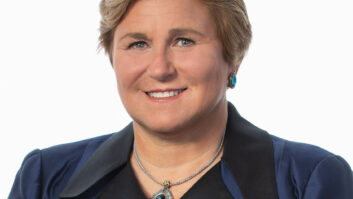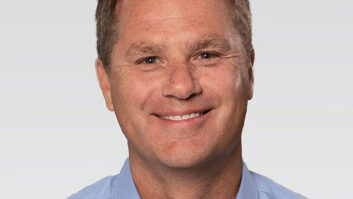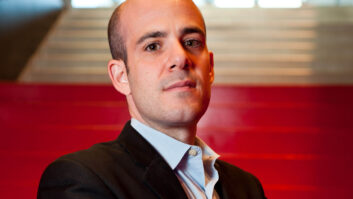LAS VEGAS – With an assist from actors and his trenchcoat-clad TV spokesman, Sprint chairman William Esrey demonstrated the practical benefits of third-generation wireless service and confirmed Sprint PCS’s timetable for a nationwide commercial launch of 3G data service in midyear.
During yesterday’s keynote speech, Esrey told a crowded Hilton Theater audience that “3G will dramatically enrich the whole wireless experience” by transmitting “volumes of useful data without being tethered to a desk or phone line.” The service will deliver “capabilities that were limited [previously] to the home or office PC” and “will make wireless even more ubiquitous,” he said. “Most people are not interested in replacing technology with higher technology,” he said, but 3G services planned by Sprint will fulfill consumers’ desire for “easier to use technology that creates value.”
At launch via laptops and PDAs connected to CDMA 1x handsets or to PC-Card radiomodems, Sprint’s 144Kbps-peak-datarate service will deliver wireless access to the Internet and corporate Intranets and let users open attachments sent via email. (The average throughputs will be 70Kbps-80Kbps, a spokesman later said).
CDMA 1x will also let Sprint subscribers send digital images quickly from attached digital still cameras or from embedded cameras to any email address. It’ll also let users download and display video clips of movie trailers, sports games or news programs directly for playback on a phone’s color screen, and it will turn phones into game players that play downloaded games or Internet-based games. Consumers will also be able to play multiplayer games with other wireless-handset users.
As chips incorporating both 1x and gpsOne location technology become available, subscribers will be able to access services that display maps with directions to a destination without subscribers having to enter their current location.
During his speech, Esrey also revealed that Hitachi will reenter the U.S. wireless-phone market, this time as an OEM supplier to Sprint. Hitachi’s phone, whose availability wasn’t announced, will incorporate large color screen, Java, photo caller ID and A/V streaming support. Esrey also provided a sneak peek of a Sanyo 1x phone with 2.5-inch color display, estimated by Sanyo to be available in the United States in 2003.
During a Sprint reception after the keynote, Sprint PCS president Charles Levine wouldn’t reveal a more precise timetable launch, but he said “we know the exact day [of the launch] and everything is tracking to that day.” The service will be available in every cell site in the Sprint-owned network, which covers 185 million people. Most Sprint affiliates, whose networks cover markets with 50 million people, will be online for the launch, with others going online within a couple months, he said.
He declined to say whether PocketPC-based 1x phones would be available at launch.
At launch, Sprint will support the downloading of still images and games and possibly the downloading of video clips. Multiplayer games are also possible at launch, he said. “At some point, I don’t know why anyone would buy a GameBoy anymore,” he said. “With Sprint PCS, you’ll be able to play multiplayer games.”
Levine outlined the timeline for further network upgrades, with the carrier boosting datarates to a peak 288kbps in select markets in mid- to late 2003. That service will also enable simultaneous voice and data transmission. 1x EV-DV technology, allowing for 3Mbps speeds, will come in 18 to 24 months. Most streaming A/V services, he said, will have to wait for EV-DV.
Sprint already offers five 1x handsets to seed the market before the commercial launch. “By summer, virtually every handset will be 1x,” he said. A third of them will have color screens. 1x handsets will run from less than $100 to more than $500, and typical handsets will cost under $200, he noted.













